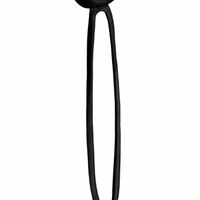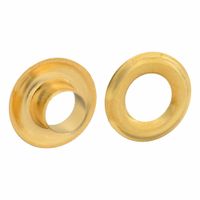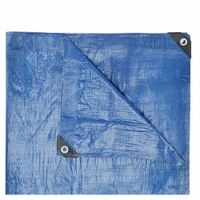Call +(254) 703 030 000 / 751 483 999 / 721 704 777
.....Read More
Frequently Asked Questions
What are the different types of tarps available?
Tarps come in a variety of materials and designs, each suited for different applications.
Common types include: * Polyethylene (Poly) Tarps: These are the most common and affordable. They are lightweight, waterproof, and come in various thicknesses (measured in mils). They are often used for general-purpose covers, construction, and camping.
* Canvas Tarps: Made from cotton, these tarps are breathable, durable, and offer good resistance to abrasions and punctures. They are often treated for water resistance and mildew prevention, making them suitable for covering equipment, painting, and drop cloths.
* Vinyl Tarps: Known for their superior strength, weather resistance, and tear resistance, vinyl tarps are often used for heavy-duty applications like truck covers, industrial uses, and athletic field covers. They are waterproof and often flame-retardant.
* Mesh Tarps: These tarps have an open weave that allows air and light to pass through. They are commonly used for shade, privacy screens, truck covers (to prevent items from blowing out while allowing airflow), and fencing. They are not waterproof.
* Flame Retardant Tarps: These tarps are treated to resist ignition and slow the spread of fire. They are crucial for applications where fire safety is a concern, such as welding, construction sites, and public events.
* Insulated Tarps: These tarps have multiple layers, including insulation, to help maintain temperature. They are used in construction for concrete curing, protecting materials from freezing, and creating temporary heated enclosures.
How do I choose the right tarp size for my needs?
Choosing the right tarp size involves assessing the intended use and the dimensions of the object or area to be covered. First, measure the length, width, and height of what you need to cover. If you're covering an object, allow extra material for draping over sides and corners, typically adding 1-2 feet to each dimension for sufficient overlap and securing. For example, if covering a 10x10-foot area that is 5 feet high, you'll need at least a 12x12-foot tarp to cover the top and have some overhang, plus additional length to account for the height on all sides.
Consider the tarp's purpose: * **Ground cover/footprint:** A tarp slightly smaller than your tent floor prevents water pooling between the tarp and tent.
* **Shelter/lean-to:** A larger tarp offers more coverage and flexibility for pitching.
* **Protection for equipment/woodpiles:** Measure the item and add extra for complete coverage and tie-down points.Also, factor in the tarp's finished size, as advertised sizes are often cut sizes before hems and seams, making the actual finished size slightly smaller. Always err on the side of a larger tarp if unsure, as excess material can be folded or secured, while too small a tarp is unusable.
What materials are tarps made from?
Tarps, or tarpaulins, are typically made from a variety of materials, each offering different properties suited for various applications. Common materials include polyethylene (PE), often used for general-purpose tarps due to its lightweight, waterproof, and tear-resistant qualities. Polyethylene tarps are frequently laminated for added strength and UV resistance. Canvas tarps, made from cotton or linen, are known for their breathability, strength, and ability to withstand abrasion, making them suitable for covering items that need air circulation. However, canvas tarps are not inherently waterproof unless treated. Vinyl (PVC) tarps are highly durable, waterproof, and resistant to oil, grease, acid, and mildew, making them ideal for heavy-duty industrial uses, truck covers, and outdoor equipment. Another material is polypropylene, which is strong and tear-resistant, often used for woven tarps. Specialty tarps might incorporate materials like polyester, which offers good strength and UV resistance, or mesh materials for applications requiring airflow or shade. The choice of material largely depends on the intended use, desired durability, and exposure to environmental conditions.
How do I properly secure a tarp?
To properly secure a tarp, you'll want to ensure it's taut and stable to withstand wind and rain. Start by spreading the tarp over the area you want to cover. Identify the reinforced grommets along the edges of the tarp. These are designed for attaching ropes or bungee cords.
Next, use ropes, bungee cords, or zip ties to secure the tarp to anchor points. These anchor points could be stakes in the ground, trees, posts, or other sturdy objects. Begin by securing the corners first, pulling them tight to remove any slack. Once the corners are secured, work your way around the remaining grommets, attaching them to anchor points and pulling the tarp taut as you go.
For added stability, especially in windy conditions, consider using additional tie-downs in the middle of the tarp if it has central grommets. You can also create a "ridge line" by running a rope over the center of the tarp and securing it at both ends, then draping the tarp over this line before securing the sides. This helps to shed water and prevent pooling. Finally, double-check all your knots and connections to ensure they are secure.
What are tarp grommets and how are they used?
Tarp grommets are small, reinforced holes, typically made of metal, that are pressed into the edges of tarpaulins. Their primary function is to provide secure anchor points for ropes, bungee cords, or stakes, allowing the tarp to be tied down, stretched, or suspended. They are commonly used to secure tarps over objects for protection against weather, to create temporary shelters, or to hold down cargo on trailers.
How do I repair a damaged tarp?
Please specify what you would like me to answer.
What are the best tarp accessories to use?
The best tarp accessories enhance a tarp's functionality and durability. Essential items include high-quality ropes or bungee cords for secure tying, stakes or pegs for anchoring to the ground, and tarp clips or clamps to create additional tie-down points or repair small tears. A ground cloth or footprint can be used underneath the tarp to protect it from abrasion and moisture. For setup, adjustable poles are useful for creating shelters or awnings, while a hammer or mallet aids in driving stakes. Repair kits, including patches and adhesive, are also valuable for extending a tarp's lifespan. The specific accessories needed will depend on the intended use, whether for camping, hauling, or general outdoor protection.
How do I clean and maintain a tarp?
To clean a tarp, first, lay it flat and remove any loose dirt or debris with a soft brush or broom. For stubborn dirt or stains, use a mild soap or detergent mixed with lukewarm water. Avoid harsh chemicals, bleach, or abrasive cleaners, as these can damage the tarp's material and coating. Gently scrub the affected areas with a sponge or soft cloth. Rinse the tarp thoroughly with clean water to remove all soap residue.
Proper drying is crucial for preventing mold and mildew. Hang the tarp in a well-ventilated area, away from direct sunlight, until it is completely dry. Storing a damp tarp can lead to mildew growth and a musty odor.
For maintenance, regularly inspect your tarp for any tears, holes, or frayed edges. Small damages can often be repaired with a tarp repair kit or patching tape. If the tarp has a waterproof coating, reapply a waterproofing spray periodically, especially after cleaning, to maintain its water repellency.
When storing, ensure the tarp is clean and dry. Fold or roll it neatly to prevent creases that can weaken the material over time. Store it in a cool, dry place, protected from extreme temperatures, rodents, and direct sunlight. Following these steps will extend the lifespan of your tarp and keep it in good condition for future use.
How long do tarps typically last?
The lifespan of a tarp varies significantly based on several factors, including the material it's made from, the quality of its construction, and how it's used and maintained. * Materials:
* Polyethylene (poly) tarps are common and affordable, but generally have the shortest lifespan, typically lasting 1-5 years, especially with regular exposure to UV rays.
* Canvas tarps, made from cotton or polyester, are more durable and can last 5-10 years, offering better breathability and resistance to tears.
* Vinyl (PVC) tarps are the most robust, often used for heavy-duty applications, and can last 10-20 years or more due to their superior weather resistance, UV protection, and tear strength.
* Usage and Exposure: Tarps used outdoors and exposed to harsh elements like intense sunlight, extreme temperatures, wind, and rain will degrade faster than those used indoors or for occasional, less demanding tasks. UV radiation is a primary culprit for material breakdown.
* Maintenance: Proper care, such as cleaning, drying before storage, and avoiding abrasive surfaces, can significantly extend a tarp's life.
* Quality: Higher-quality tarps with reinforced grommets, thicker material, and UV treatments will naturally outlast cheaper, thinner options.In summary, while a cheap poly tarp might only last a year or two in continuous outdoor use, a well-maintained, high-quality vinyl tarp could last a decade or more.
Where can I buy high-quality tarps and accessories?
You can find high-quality tarps and accessories at various retailers at Eyby.com.
When choosing, consider the material (e.g., UV-resistant poly, canvas, vinyl), thickness (measured in mil), and features like reinforced grommets, which indicate durability and quality.


